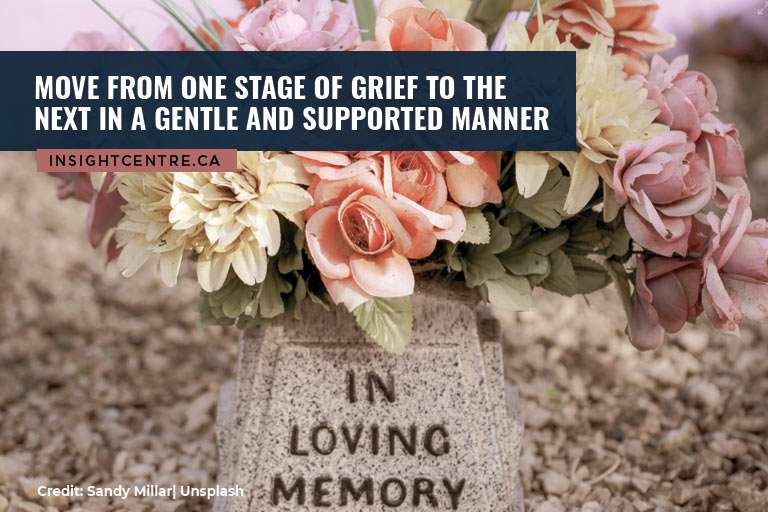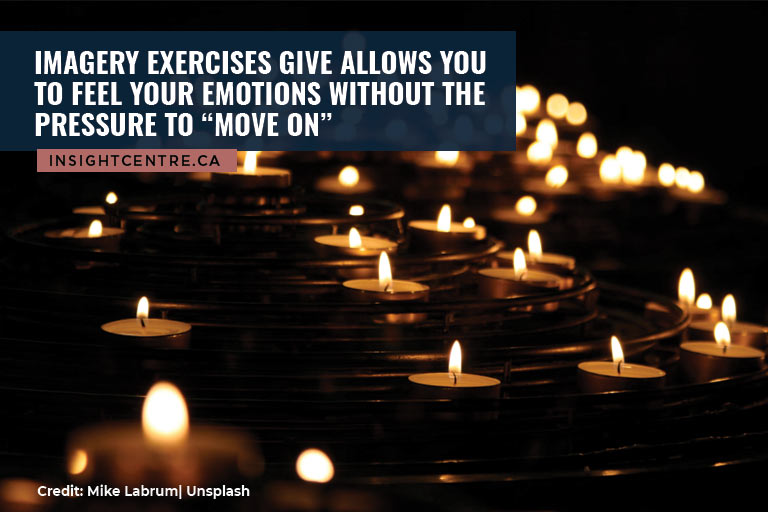
Grief is a deeply personal journey that unfolds uniquely for each person. While grieving, individuals may encounter a complex emotional landscape that includes denial, anger, bargaining, depression, and acceptance. These stages are not always linear and can vary in intensity and duration. As traditional therapeutic methods continue to evolve, many therapists are integrating imaginative, imagery-based techniques to help you work through grief. Imagery techniques offer a powerful means for you to process emotions, build resilience, and find acceptance, ultimately creating a pathway for healing.
Imagery techniques in therapy involve the use of guided visualization, symbolic imagery, and imaginative exercises that help you access and process emotions on a deeper, subconscious level. These techniques can bypass mental blocks or defences, allowing you to connect with emotions and memories that might be difficult to articulate verbally. By creating a safe space to process complex feelings, imagery-based approaches offer you the opportunity to go through grief in a way that feels manageable and empowering.

Each stage of grief brings unique challenges and emotions, which can often feel overwhelming. Imagery techniques provide a framework for you to process these feelings at their own pace, aiding in movement from one stage to the next in a gentle and supported manner.
In the initial denial stage, the loss may feel too surreal or painful to fully acknowledge. This stage is often characterized by a sense of numbness or disbelief, which can create barriers to further emotional processing. Through imagery techniques, therapists can guide you to envision safe spaces where they can gradually confront and accept the reality of their loss.
In this exercise, the therapist guides the you in visualizing a safe, comforting space where they feel supported and grounded. This place could be a cozy room, a serene natural landscape, or any environment that brings a sense of calm. By building this safe mental space, you can start to invite thoughts about the loss, gently reducing denial and preparing for deeper emotional work.
The anger stage can be intense, as individuals may feel frustration, injustice, or even guilt. Imagery techniques allow for the safe release and expression of these powerful emotions, helping you to identify and understand the roots of their anger.
One imagery technique is to ask you to picture themselves throwing stones into a lake, each stone representing a specific aspect of their anger or frustration. This act of visual release can offer a cathartic experience, symbolizing the letting go of pain and resentment. It allows you to process their anger without judgment, creating room for other emotions to emerge.
During bargaining, individuals often find themselves reflecting on “what if” scenarios, seeking ways to reverse or change the loss. Imagery techniques can help you address these thoughts in a constructive way, bringing clarity and understanding to this emotional bargaining.
Therapists might guide you in visualizing a conversation with the person they have lost. Through this exercise, you can express unresolved questions, apologies, or gratitude. By engaging in this imaginative dialogue, they may find a sense of peace, allowing them to let go of “what ifs” and come to terms with what has happened.
The depression stage of grief can be particularly difficult, as you may experience sadness, isolation, or a sense of hopelessness. Imagery techniques can provide a nurturing environment for you to face and honor these feelings, promoting self-compassion and healing.
In this exercise, you are encouraged to visualize themselves as a caretaker, offering compassion and comfort to their grieving self. They might imagine wrapping themselves in a warm blanket or being held by a compassionate figure, embodying a sense of support and unconditional love. This nurturing imagery can help you build resilience, encouraging them to see their grief as a natural and valid part of healing.
In the acceptance stage, individuals begin to understand and embrace the new reality that comes after a loss. Imagery techniques can aid you in visualizing a meaningful future while honoring the memory of their loved one, helping them establish a sense of purpose and hope.
Therapists may guide you in imagining a “memory garden” where they can plant symbols of cherished memories, qualities, or lessons learned from their loved one. This imagery not only provides a safe space to honor the loss but also allows you to visualize themselves moving forward, carrying positive aspects of the relationship into their future.

Imagery-based techniques are particularly effective in grief work because they:
Grief often brings up emotions that can be difficult to rationalize. Imagery techniques tap into the subconscious mind, where these emotions are stored, allowing you to process their feelings without judgment.
you can feel empowered by the ability to control their inner landscape. Through visualization, they can create safe spaces, supportive figures, and positive environments that provide comfort and stability during difficult moments.
Imagery exercises give you permission to feel a full spectrum of emotions without the pressure to “move on” prematurely. By guiding them through these visual exercises, therapists provide a respectful and supportive environment for each stage of grief.
Guided imagery can foster self-compassion, helping you accept that grieving is natural and that self-kindness is essential in the healing process. Imagery exercises that involve nurturing and comforting oneself can be particularly helpful in strengthening self-compassion.
When incorporating imagery techniques into grief therapy, therapists can consider the following tips:
Each you has a unique relationship with their imagination. Some may find it difficult to visualize vividly, while others may prefer symbolic imagery over direct representation. Tailor exercises to match the you’s preferences and comfort.
Since imagery techniques can bring up strong emotions, it is crucial for therapists to provide steady, non-judgmental support, guiding you through difficult moments as they arise.
you can benefit from discussing or journaling about their experiences after each session, allowing them to deepen their understanding and insights gained through imagery.
Grief can be a profound and life-changing experience. While it may seem like an insurmountable journey, imagery techniques offer you a compassionate, non-intrusive way to help you through the stages of grief. As you find ways to honour their loss, you also rediscover the strength within yourself to build a future that embraces both your love for the lost and your resilience in moving forward.
Insight Centre’s compassionate Barrie therapists offer online therapy to help you process your loss and find peace. Through guided imagery and other therapeutic techniques, you can work through the stages of grief and emerge stronger. Call +1 647-633-1928 to schedule a session.
Copyright 2025 Insight Centre | All Rights Reserved | Sitemap | Powered by: Local SEO Search Inc.